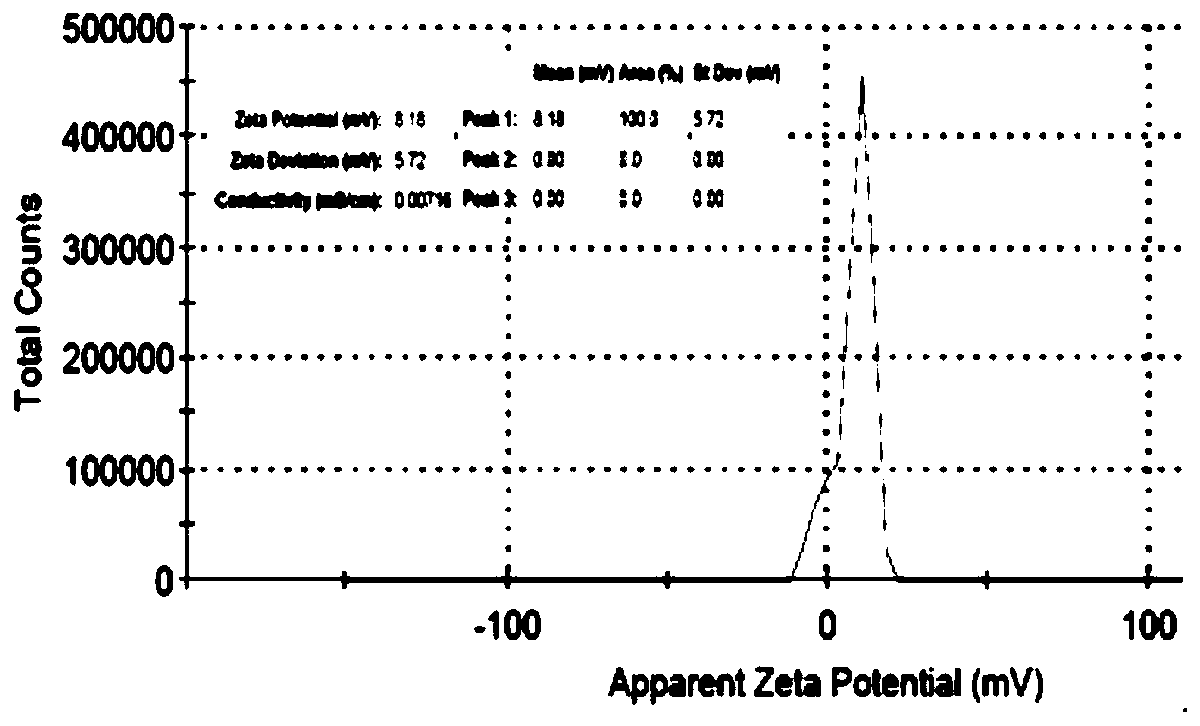A kind of carbon quantum dot nano material and its preparation method and application
A nanomaterial and carbon quantum dot technology, applied in the field of organic carbon quantum dot synthesis, can solve problems such as limiting the application of PEI, and achieve the effect of simple and efficient synthesis method, favorable for cell wall diffusion, and uniform particle size
- Summary
- Abstract
- Description
- Claims
- Application Information
AI Technical Summary
Problems solved by technology
Method used
Image
Examples
Embodiment 1
[0036] Dissolve 0.15 g of citric acid, 0.13 g of mercaptoethylamine, and 0.1 g of polyethyleneimine (Mw = 800) in 3 mL of ultrapure water, stir well, and ultrasonically (power 200 W, frequency 28 KHz) for 3 min at 170 ℃, heated with a single-mode microwave synthesizer (power 500W) for 10 min, dialyzed the synthesized mixture through a dialysis bag (Mwco: 1000) in ultra-pure water at 45 °C for 36 h, changed the ultra-pure water every 10 h, and rotated in vacuum Collect the material after drying in a desiccator, and detect the fluorescence emission with a UV lamp (305 nm, 365 nm), such as figure 1 As shown, the synthesized material is transparent brown-yellow under white light, and has high-brightness fluorescence emission under ultraviolet light (305 nm, 365 nm). Malvern particle size analyzer detects the DLS particle size and Zeta potential value of the synthetic material. The particle size is about 0.7nm, which is relatively small; it is positively charged, about +8.18 mV, so...
Embodiment 2
[0041] Disperse 20 μL of the material synthesized in Example 1 in the water system, add 10 μg of the plasmid into ultrapure water, make up the total amount to 50 μL, and ultrasonically shake in an ice bath for 3 minutes in an ultrasonic cleaner, and then put it in a dark place to combine After 30 min, add it to the single cells of the Liriodendron suspension system sieved through a 300-mesh cell sieve, mix well, then transfer to the cell culture plate, add 1 mL of ultrapure water, and observe the fluorescent carbon dots in the Liriodendron suspension system after 24 hours. distribution in cells. It can be seen from Example 1 that the synthetic material has certain positively charged groups, which can adsorb plasmids through electrostatic interaction, and co-incubating with cells can adsorb cell walls, such as Figure 12 As shown, the GFP-adsorbed green fluorescent protein expression plasmid can be delivered into the cell for expression, so that there is a high-brightness green...
Embodiment 3
[0043] Using different ratios of reaction substrates, the materials were synthesized by a microwave synthesizer at different reaction temperatures for 10 minutes. 0.15 g citric acid, 0.08 g mercaptoethylamine, and 0.2 g polyethyleneimine (Mw = 800) were dissolved in 3 mL of ultrapure water, stirred and mixed, ultrasonicated for 3 min, heated at 150 °C for 10 min in a microwave synthesizer, and the synthesized mixture was dialyzed in ultrapure water at 45 °C for 36 h through a dialysis bag (Mwco: 1000). The ultrapure water was changed every 10 h, and the material was collected after drying in a vacuum rotary dryer. 200 μL was taken and 1 mL of single cells of Liriodendron tulipifera suspension were co-incubated in 3 mL of ultrapure water for 24 h. Material-specific fluorescence found that plasmolysis appeared in the cells treated with the synthesized sample, and multiple endocytic vesicles with specific fluorescence distributed on the inner side of the cell membrane appeared in ...
PUM
| Property | Measurement | Unit |
|---|---|---|
| power | aaaaa | aaaaa |
| particle diameter | aaaaa | aaaaa |
Abstract
Description
Claims
Application Information
 Login to View More
Login to View More - R&D
- Intellectual Property
- Life Sciences
- Materials
- Tech Scout
- Unparalleled Data Quality
- Higher Quality Content
- 60% Fewer Hallucinations
Browse by: Latest US Patents, China's latest patents, Technical Efficacy Thesaurus, Application Domain, Technology Topic, Popular Technical Reports.
© 2025 PatSnap. All rights reserved.Legal|Privacy policy|Modern Slavery Act Transparency Statement|Sitemap|About US| Contact US: help@patsnap.com



